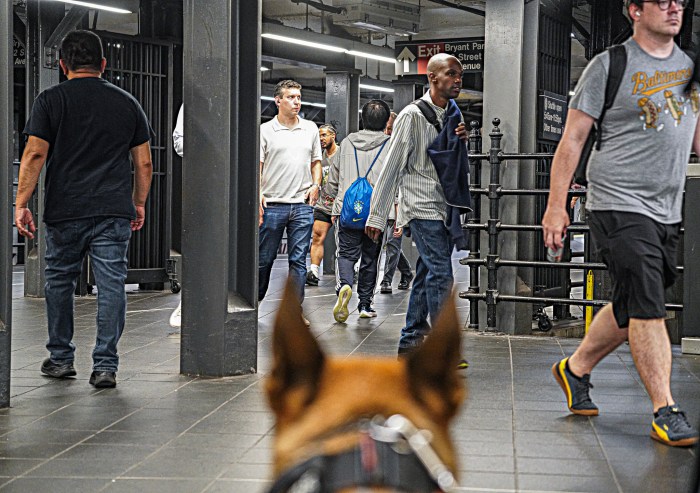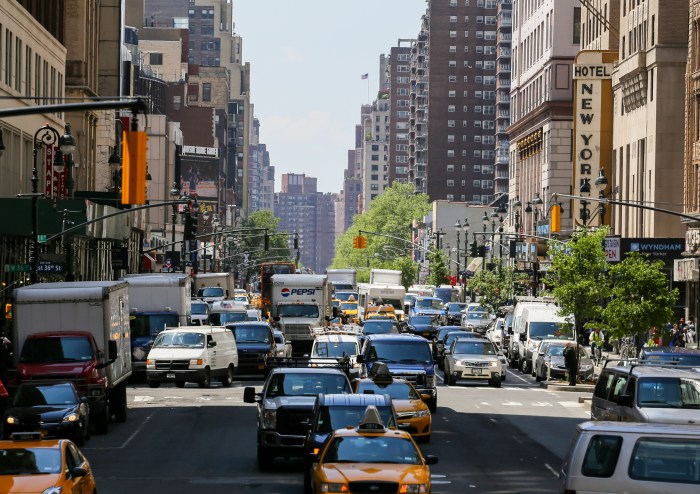
Gov. Andrew Cuomo’s outsized control of the MTA is the focus of a new report recommending reforms to the transportation authority.
The “Open MTA” report, to be published Wednesday from the good-government group Reinvent Albany, details how it says the governor’s meddling in MTA priorities; a failure of outside oversight; bad public data and more all coalesced into the subway service nadir of 2016 and 2017.
Through the lengthy report’s 170 pages, the group issued 50 proposals for a more accountable and transparent state transportation authority, with John Kaeny, Reinvent Albany’s executive director, charging that “the MTA must start behaving like a public transit agency, not the CIA.” But, unlike other visions for a city takeover of subways and buses, the group recommends reforming the authority while preserving its current structure.
“The recommendations are meant to be pragmatic, sensible steps. It’s nothing earth-shattering, but it’s so important that the day-to-day things get done correctly — that they get done transparently and accountably,” said Rachael Fauss, Reinvent Albany’s senior research analyst and author of the report. “We don’t have to blow up the MTA. We can make it a more accountable and transparent institution by just doing basic reforms that open up the agency, like open data and improving [Freedom of Information Law responses].”
The report’s first page has five words in bold type: “The Governor controls the MTA.” Fauss said that, while the point has been drilled home by advocates in recent years, it’s important to contextualize Cuomo’s control and how it undermines, or bypasses, the MTA’s 17-member board, which is technically the governing body of the authority.
“We kind of expected the narrative that everybody else uses: the board is a miserable failure,” Fauss continued. “But the fact is the board has such limited responsibility and oversight power, and it just became so abundantly clear that the main finding of this report is that the governor controls the MTA. Period.”
The governor commanded the L train shutdown reversal; New York Crossings, which in part brought cashless tolling to bridges, and the program to bring cosmetic changes to subway stations, known as the Enhanced Station Initiative (ESI) — all while eluding rigorous board oversight. For elements of Crossings, the board was presented “piecemeal” expenditures worth tens of millions of dollars for projects buried in a larger contract, according to the group.
Cuomo also forced the city to pay for half of the $800 million Subway Action Plan. He then blamed the drawn-out battle over funding with Mayor Bill de Blasio for delaying subway improvements.
But in 2017 money toward subway improvements — specifically $120 million for signal modernization — was cut from the MTA’s current capital spending plan, as the authority made room to fund Cuomo’s ESI, according to the report. That signal money was only added back once the MTA Subway Action Plan was fully funded.
The report goes farther than the series of reforms the MTA is already undertaking to cut costs. It recommends transferring authority for most contract approvals from the MTA board to the state comptroller’s office. It calls for Cuomo to stop renewing the “state of emergency” he declared over the agency back in 2017, which suspended contract procurement rules.
"The MTA’s management problems have existed since the agency was created because no one has been in charge and they have been accountable to no one. The governor laid out a very aggressive agenda to reform the MTA, which the legislature passed, and it will lead to a reorganization and change the way they do business,” Patrick Muncie, a spokesman for Cuomo, said in a statement, adding that “the governor has stepped into major projects that no one else wanted to touch…”
Many of the report’s recommendations could be carried out by the MTA, but Reinvent Albany also calls for the State Senate and Assembly to create a subcommittee dedicated to overseeing the authority. Since 2015, the two houses held just two oversight hearings on the authority as service spiraled out.
Ben Fried, a spokesman at the nonprofit TransitCenter, which helped fund the report, said the MTA management’s recent admission that faulty signal equipment artificially slowed subway service was a textbook example of how better oversight could go a long way.
“Problems at the MTA tend to fester for a long time and reach crisis levels before corrective action is taken — like the grade timers slowing down subways,” he said. “If officials at the MTA agencies, state Legislature and all these oversight bodies were following the recommendations in the report — that problem could have been spotted years ago.”




































